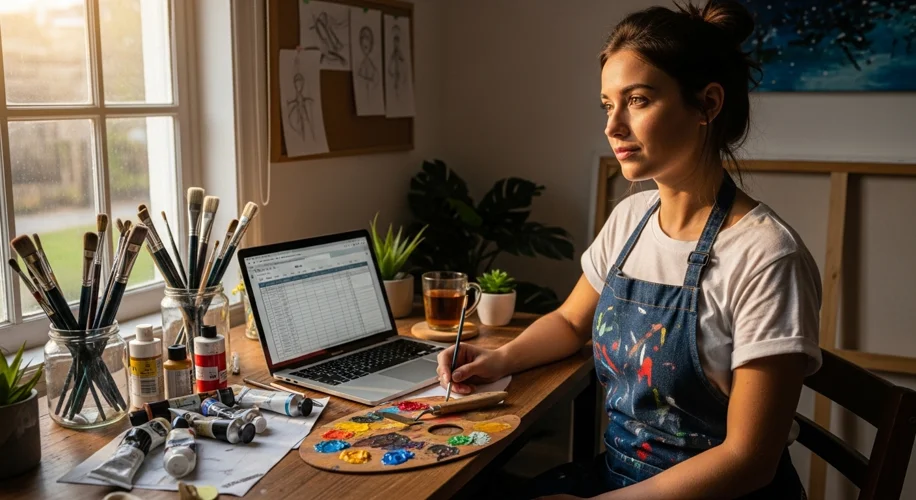Hey everyone!
Lately, I’ve been thinking a lot about how much money plays a role in our creative lives. It’s not always the most glamorous part of being an artist, but it’s super important, right? Like, how do we keep the paint flowing without constantly stressing about bills?
For a long time, my approach to money was pretty much “winging it.” I’d get a commission, pay some bills, maybe buy some new supplies, and hope for the best. Sound familiar? It worked okay when I was just starting out, but as my art business grew, so did my financial anxieties. I’d find myself staring at my bank account, wondering where it all went and if I could actually afford that fancy new easel I’d been eyeing.
This feeling of financial stress isn’t just about having enough money; it’s about feeling in control and giving your creative passions the space they need to thrive. I realized I needed a more solid plan. So, I decided to get serious about budgeting.
Now, “budgeting” might sound a bit stiff, but I tried to make it fit my lifestyle. For me, it wasn’t about restricting myself to the point of misery. It was about understanding where my money was going so I could be more intentional with it. I wanted to make sure I was spending on the things that mattered – like good quality paint, framing my work, and yes, that easel!
My first step was tracking my income and expenses. I used a simple spreadsheet, but honestly, there are tons of great apps out there that can help too. The key is just to start. For a month, I just recorded everything. Every coffee, every art supply purchase, every Etsy sale. It was eye-opening!
Once I saw it all laid out, I could see patterns. I noticed I was spending more on impulse art supply buys than I realized. I also saw that my income from Etsy fluctuated quite a bit, which made planning tricky.
So, I started creating a more realistic budget. I allocated specific amounts for different categories: art supplies, studio rent (my cozy corner of my apartment!), marketing, living expenses, and savings.

